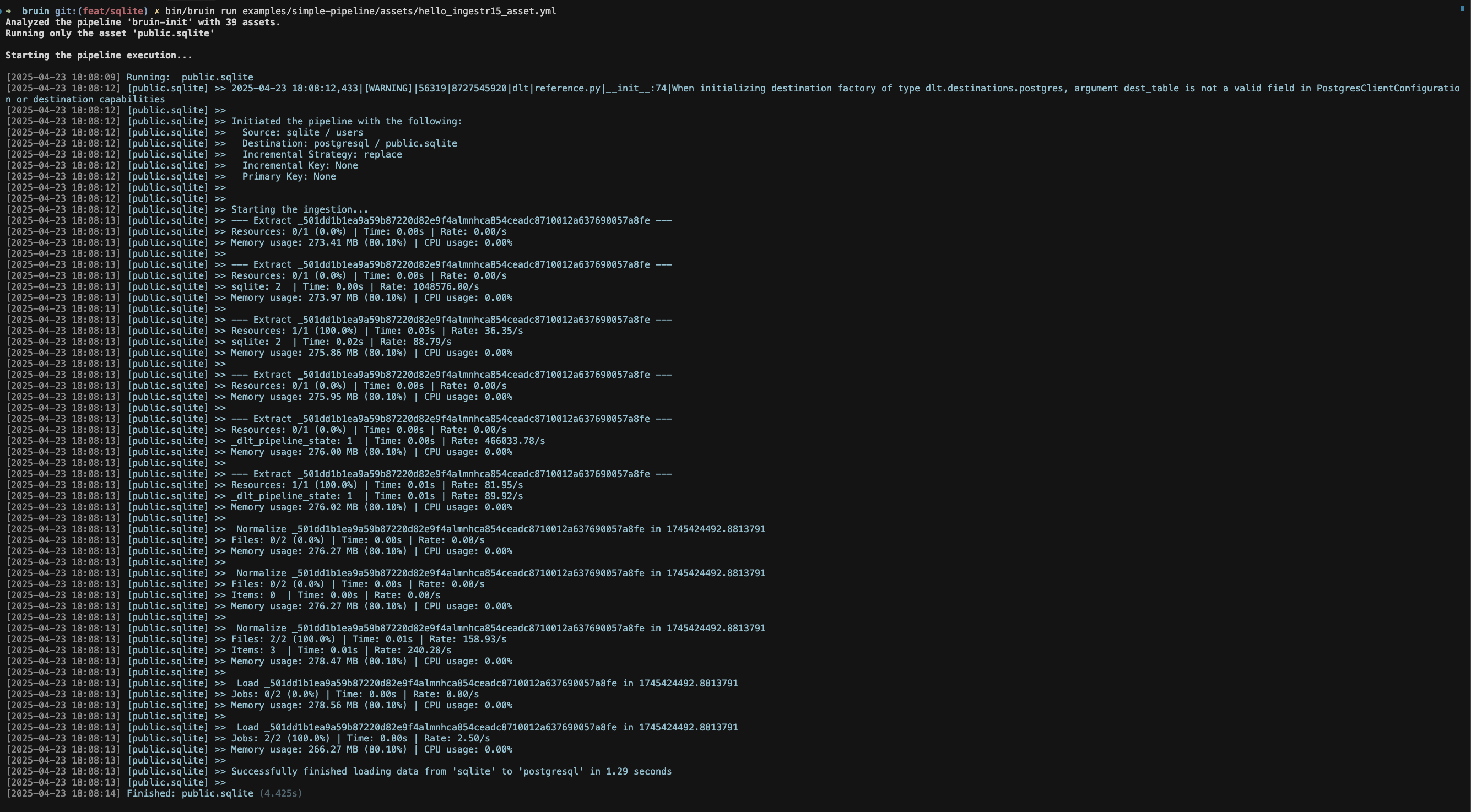SQLite
SQLite is a C-language library that implements a small, fast, self-contained, high-reliability, full-featured, SQL database engine.
Bruin supports SQLite as a source for Ingestr assets, and you can use it to ingest data from SQLite into your data warehouse.
In order to set up SQLite connection, you need to add a configuration item in the .bruin.yml file and in asset file.
Follow the steps below to correctly set up SQLite as a data source and run ingestion.
Step 1: Add a connection to .bruin.yml file
To connect to SQLite, you need to add a configuration item to the connections section of the .bruin.yml file. This configuration must comply with the following schema:
connections:
sqlite:
- name: "sqlite"
path: "/Users/test/temporary/my_database.db"name: The name to identify this SQLite connectionpath: The path to the SQLite database file
Step 2: Create an asset file for data ingestion
To ingest data from SQLite, you need to create an asset configuration file. This file defines the data flow from the source to the destination. Create a YAML file (e.g., sqlite_ingestion.yml) inside the assets folder and add the following content:
name: public.sqlite
type: ingestr
connection: neon
parameters:
source_connection: sqlite
source_table: 'users'
destination: postgresname: The name of the asset.type: Specifies the type of the asset. Set this to ingestr to use the ingestr data pipeline.connection: This is the destination connection, which defines where the data should be stored. For example:postgresindicates that the ingested data will be stored in a Postgres database.source_connection: The name of the SQLite connection defined in .bruin.yml.source_table: The name of the data table in SQLite that you want to ingest.destination: The name of the destination connection.
Step 3: Run asset to ingest data
bruin run assets/sqlite_ingestion.ymlAs a result of this command, Bruin will ingest data from the given SQLite table into your Postgres database.
